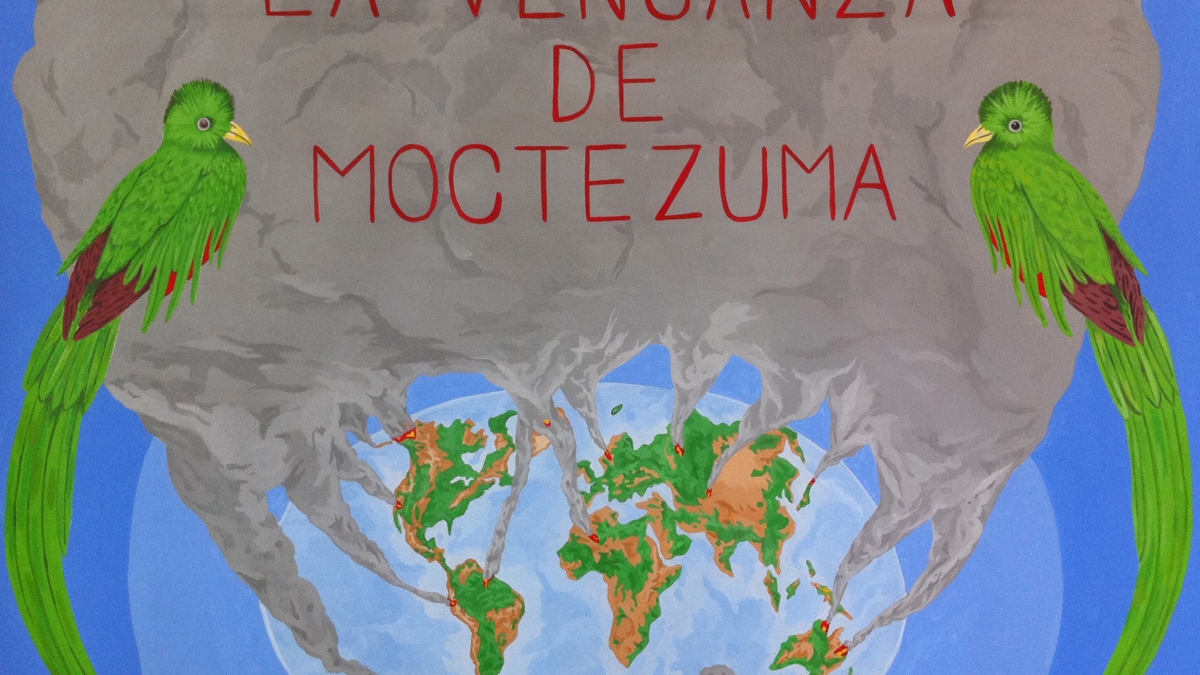'Moctezuma’s Revenge' opens Jan. 25 at ASU Art Museum

“Moctezuma’s Revenge,” the first comprehensive solo exhibition of works by contemporary Mexican-American artist Eduardo Sarabia, opens at the ASU Art Museum Jan. 25.
The exhibition, curated by Julio César Morales, will feature more than 40 works of art from both previous and new bodies of Sarabia’s work in a variety of media, including sculpture, painting, video, fiber and works on paper.
Also included in “Moctezuma’s Revenge” is Sarabia’s breakthrough installation, “The Gift,” previously exhibited at the 2008 Whitney Biennial.
“Sarabia's exciting new body of work is in perfect dialogue with Arizona,” explains Morales, “in regards both to the content of the work and to its relationship to the current social climate we are experiencing, from connections to borders, the legalization and trafficking of drugs, and identity issues.”
About the exhibition
On view in the Lower Level and Lobby galleries at the ASU Art Museum through April 26, “Moctezuma’s Revenge” will be the largest exhibition to date of Sarabia’s work, as well as a departure from previous exhibitions of the artist’s work in that it will showcase the depth, range and scope of his practice. An opening reception for the exhibition will be held Feb. 14 from 6:30-8:30 p.m. (with a members, alumni and press preview from 5:30-6:30 p.m.).
The majority of new work being created for this exhibition is influenced by the artist’s recent visits to Arizona. “From the beautiful distinct light of Phoenix to Yaqui ceremonial dances, to the magic of I'Itoi's Cave,” says Morales, “Sarabia has translated Arizona into ceramic, video, fiber and works on paper.”
In conjunction with “Moctezuma’s Revenge,” the public has a rare opportunity to collect an edition of one of Sarabia’s ceramic works, made possible by a collaboration with Artspace. Proceeds from the sale of the edition will support the exhibition at the ASU Art Museum.
Artspace is an innovative new collecting platform for visual artwork, co-founded by Chris Vroom, a well-known patron of the arts and an avid contemporary art collector, that offers limited editions and original works from established and emerging artists, and makes them available for sale online while simultaneously supporting international museums, galleries and cultural institutions. For more information or to purchase one of Sarabia’s editions, visit artspace.com/magazine/interviews_features/eduardo_sarabia.
About the artist
Eduardo Sarabia (b. 1976 ) is a Mexican-American artist who grew up in Los Angeles and presently lives and works in Guadalajara, Mexico. He is best known for his series of hand-painted ceramic vessels that, at first glance, are indistinguishable from the blue-and-white Talavera vases that tourists buy as souvenirs. However, rather than traditional floral and geometric motifs, these vases boast modern hieroglyphs of Mexican and Norteño drug culture, such as marijuana leaves, guns, skulls, pin-up models, bottles of liquor, packs of cigarettes and animals that symbolize specific drugs: the rooster, marijuana; the goat, heroin; and the parrot, cocaine.
Sarabia makes reference not just to a physical border, but to a dividing line in the identity of one who feels at once familiar with and distant from his or her cultural heritage.
Sarabia’s interest in the relationship between his cultural roots and his American identity has been a constant theme in his work. Drawing inspiration from the unique and complex zone that divides Mexico from the United States, Sarabia stages intricate scenes infused with light, romanticism, humor and a sense of absurdity. From his liminal point of view, he exposes clichés about Mexican culture in order to question the imaginary borders demarcated by cultural stereotypes.
His work has been shown at Los Angeles County Museum of Art, Santa Monica Museum of Art, Museum of Fine Arts Boston, Whitney Museum of American Art, LA Louver and the New Museum of Contemporary Art, as well as at the 51st Venice Biennale, the 2nd Moscow Biennale and the Istanbul Biennial, among others.